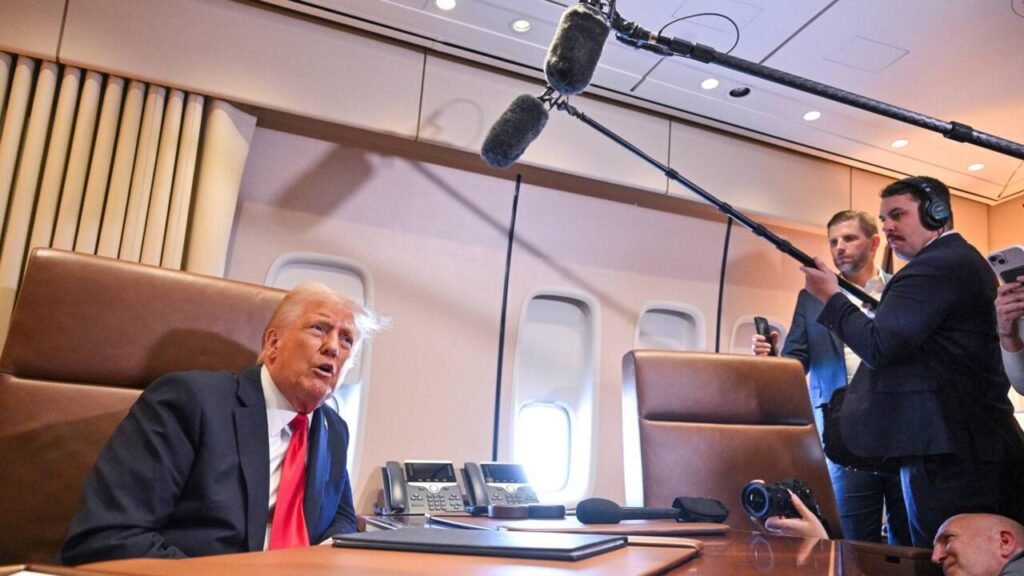Trump promised to give comprehensive details on the reciprocal tariff plan at a press conference on Tuesday or Wednesday.

US President Donald Trump said on Monday that the US would slap 25% tariffs on all steel and aluminium imports, in yet another significant step in his trade policy overhaul. These tariffs would be in addition to additional metal charges that are anticipated to be revealed later this week.
Trump also promised to announce retaliatory duties as early as Tuesday, which would go into effect nearly immediately, in an interview with reporters aboard Air Force One on Sunday while he was travelling to New Orleans for the NFL Super Bowl.
The Republican emphasised that the US will match tariff rates imposed by other nations and that this would apply to all nations, but he did not specify who would be the target of the reciprocal duties. He stated, “And very simply, it’s, if they charge us, we charge them,” in reference to his planned reciprocal tariff.
Trump imposed a 25 percent steel and 10 percent aluminium tariff during his first term as president, which ran from 2016 to 2020. However, he later granted duty-free quotas to a number of trading partners, including Canada, Mexico, and Brazil. Former President Joe Biden extended these quotas to Britain, Japan, and the European Union, and U.S. steel mill capacity utilisation has decreased in recent years.
Canada and Mexico Face More Difficulties?
The United States imports the most steel from Canada, Brazil, and Mexico, followed by South Korea and Vietnam, according to official figures.
With 79% of all imports in the first 11 months of 2024 coming from Canada, the country is by far the biggest supplier of basic aluminium metal to the US. Mexico is a significant source of aluminium alloy and scrap.
Rates of Matching?
The US president first announced on Friday that he was contemplating reciprocal tariffs to make sure “that we’re treated equally with other countries.” He said he will conduct a news conference on Tuesday or Wednesday to give more details on the proposal.
Trump has long lamented that the EU’s 10% auto import tariffs are significantly higher than the 2.5% charge for US cars. Despite shipping millions of cars west over the Atlantic each year, he regularly claims that Europe “won’t take our cars.”
However, the US has a 25% tax on pickup trucks, which are a major source of revenue for the US businesses of Detroit automakers General Motors, Ford, and Stellantis.
According to World Trade Organisation statistics, the US trade-weighted average tariff rate is roughly 2.2%, while those of India, Brazil, Vietnam, and the European Union are 12%, 6.7%, 5.1%, and 2.7%, respectively.




